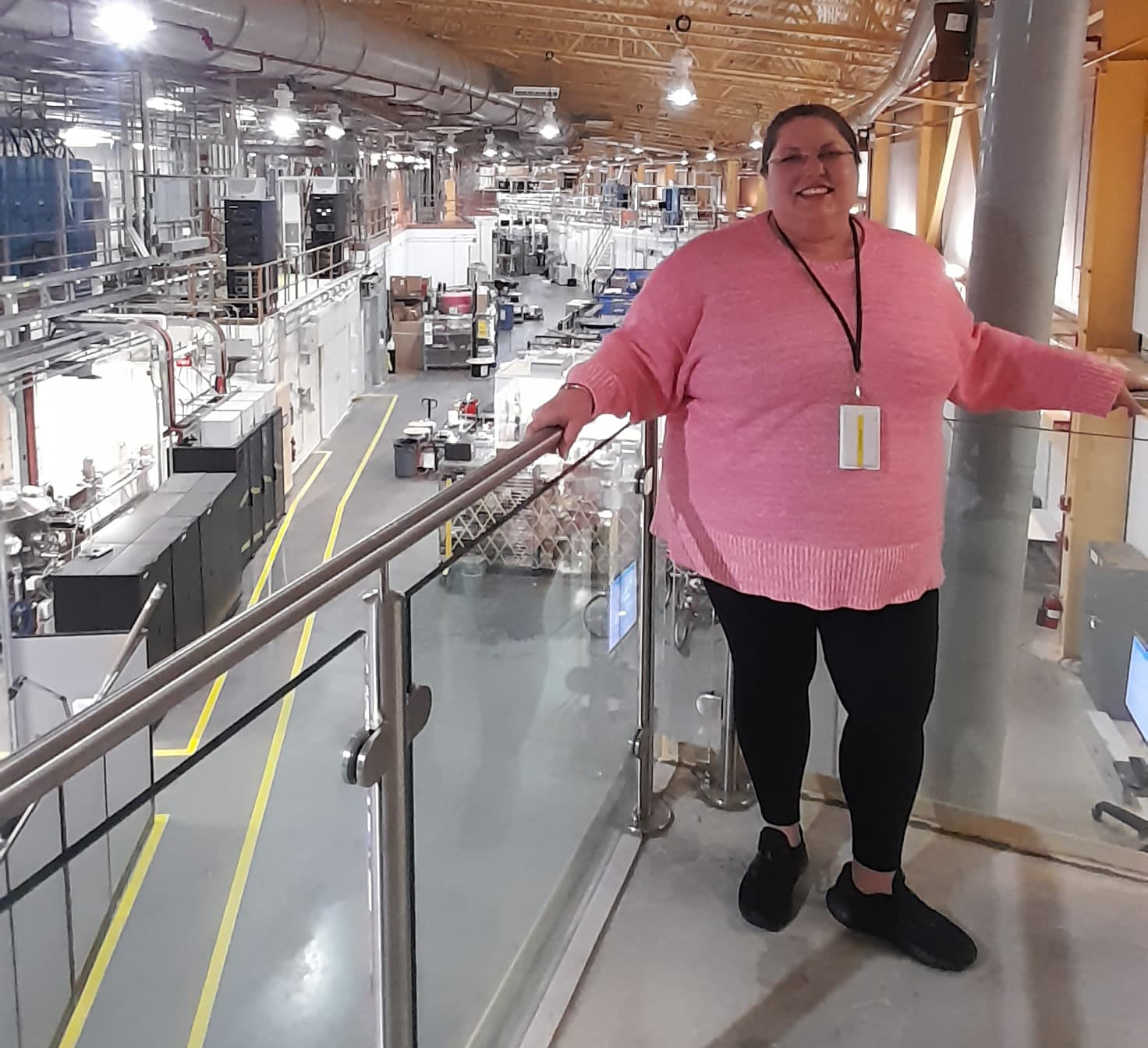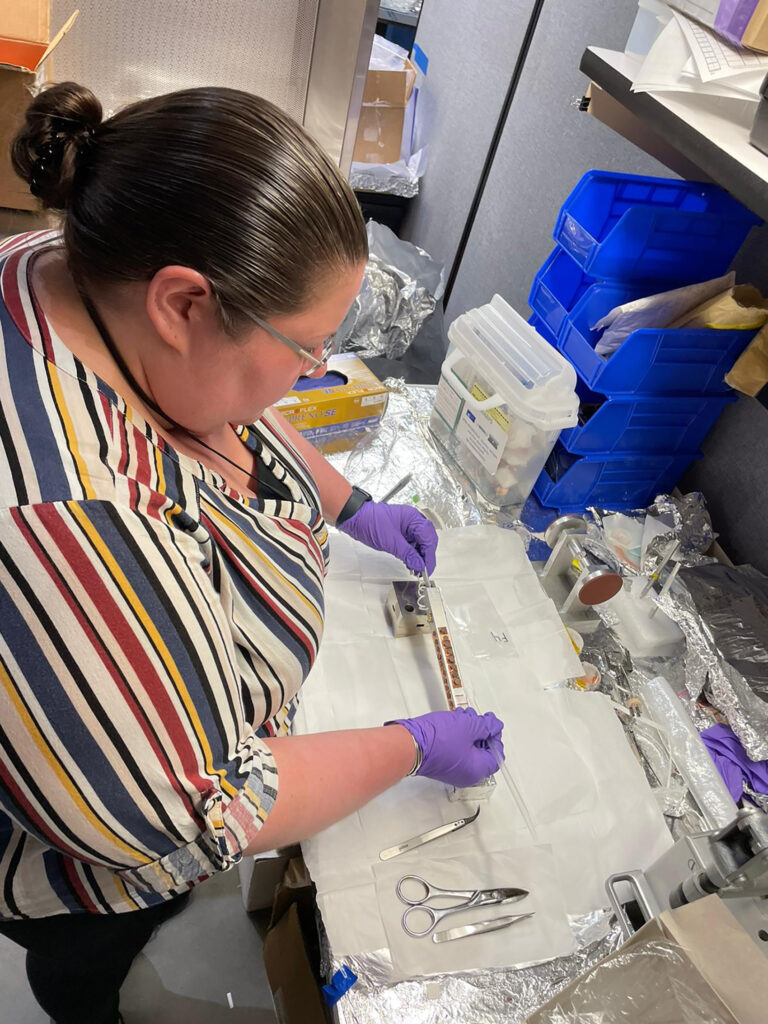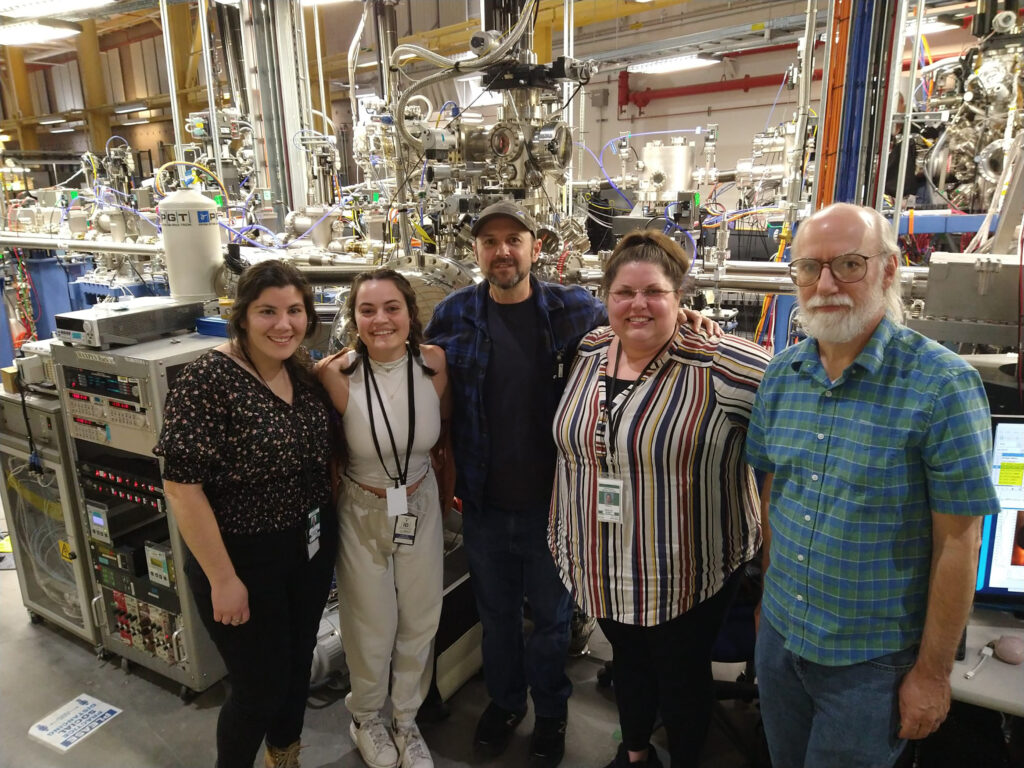‘Phosphorus lady’ finds home at Texas A&M
Szerlag carving out a niche in the world of soils

Growing up on a dairy farm in Massachusetts, Kate Szerlag, Ph.D., was no stranger to phosphorus, a nutrient byproduct of manure that can have both positive and negative environmental impacts.
Now, the new assistant professor of soil and water chemistry in the Texas A&M College of Agriculture and Life Sciences Department of Soil and Crop Sciences said she is known as the “crazy phosphorus lady” because the study has become her passion.
Plants and microorganisms rely on the soil for essential nutrients, such as phosphorus and sulfur, to synthesize numerous essential metabolites, including DNA, membranes, amino acids, proteins and enzymes.
Building a niche phosphorus research program
Szerlag said she didn’t even think she would go to college growing up on the dairy farm, but about five years after graduating high school, she attended community college and did well. She went to the University of Massachusetts, Amherst for a bachelor’s degree in environmental science and a master’s in environmental conservation, followed by a doctorate in plant and soil sciences from the University of Delaware.
Don Sparks, Ph.D., author of Environmental Soil Chemistry, came to speak while Szerlag was completing her master’s, and “I was hooked,” she said. She reached out to Sparks to continue her doctorate in soil chemistry and was offered a position. Sparks, now a Hagler Fellow at Texas A&M University, is known for using synchrotron-based radiation to study elements in the soil.
Szerlag said it’s a full-circle moment for her. Because if phosphorus is her passion, she will tell you the synchrotron, specifically the National Synchrotron Light Source II, NSLS II, at Brookhaven National Lab on Long Island, has quickly become her “happy place.”
She explained that NSLS II is a giant circular building with a circumference of about one-half mile. NSLS II and other synchrotrons work by speeding up electrons to nearly the speed of light in the storage ring. The electron beam is utilized at individual beamlines that come off the storage ring where high radiation is emitted. This allows scientists to determine things in the sample on the atomic scale.
“I use it for determining the types of phosphorus in the soil,” Szerlag said. “It’s called speciation – just like you have animal species, there are also phosphorus species, such as calcium phosphates, iron phosphates and aluminum phosphates.
“Determining the types of phosphorus in the soil helps us determine the solubility of the phosphorus as it relates to plant availability needed for nutrient uptake. Or it could be susceptible to causing environmental damage because when phosphorus exits the field, it can cause eutrophication in water bodies. The dead zone in the Gulf of Mexico – that’s from excess phosphorus and nitrogen in the water.”
Research studies across the state

Szerlag is also conducting root exudate experiments using synchrotron-based radiation, collaborating with Julie Howe, Ph.D., professor and associate department head for undergraduate programs; Peyton Smith, Ph.D., soil carbon dynamics assistant professor; graduate students Caleb Shackleford and Harrison Coker; and undergraduate student India Reddell, all in the Department of Soil and Crops Sciences.
Plants exude a variety of compounds from their roots into the soil. Work by Howe’s lab found that concentrations of phosphorus and sulfur in root exudates vary with increasing drought stress. However, very little is known about phosphorus and sulfur compounds in root exudates, and their fate in the soil is unclear.
While it is hypothesized these metabolites are strategically released to stimulate beneficial microbial associations in the soil microbiome, Szerlag said very little is known about this process or the fate of released elements and their interactions with soil particles.
“With this research, we will investigate the chemical speciation of the phosphorus and sulfur compounds in two artificial soils incubated with root exudates collected from aeroponically grown plants under both well‐watered and drought conditions,” she said.
While the experiments are being completed by Shackelford, Szerlag said her role is to look at the phosphorus species. The root exudates will be applied to artificial soil and incubated for several months to form micro aggregates before being taken to the synchrotron to see what species of phosphorus and sulfur are in the soils.
Szerlag said it is important to understand the complete ecosystem of what’s happening between the plant and soil. Preliminary data from the team’s research shows when plants are under drought stress, they release certain nutrients into the soil.
“The team wants to know what nutrients are being released and why,” she said. “What forms of these nutrients are being released into the soil. If plants are leaking phosphorus, why and where is it going? This is a new area of research; it’s novel.”
Another collaboration of Szerlag’s is studying the impact of a dairy waste lagoon on a playa lake near Lubbock. She is working with longtime collaborator Matt Siebecker, Ph.D., assistant professor of applied environmental soil chemistry at Texas Tech University, and his graduate students to examine the playa lake phosphorus, sulfur and potassium speciation. Siebecker and his students collect the samples and then take them to the synchrotron to meet with Szerlag and Reddell to determine speciation at the beamline.
Szerlag also has a unique study concerning the salinity effects on phosphorus speciation and release, relating to sea level rise. She started her salinity work as an assistant professor at Westfield State University in Massachusetts. Her doctoral research showed sulfate can remove phosphorus from the soil, especially from coastal agricultural soils.
“We found sulfate releases more phosphorus from soils than other desorbing solutions,” she said. “We were among the first to note this, and that is prompting more experiments on the phosphate interaction with sulfate.”
She started the salinity work during her doctorate with Sparks and continued at her last position. She now collaborates with Leili “Fatemeh” Izaditame, Ph.D., research scientist at the University of Texas, Dallas, and Felipe Aburto, Ph.D., assistant professor of pedology and soil biogeochemistry in the Texas A&M Department of Soil and Crop Sciences.
Logging time at the synchrotron

Szerlag aims to carve out a niche for microfocused synchrotron work with phosphorus.
Most people do bulk samples with a large beam size of 2 x 2 millimeters for X-ray absorption near-edge structure, XANES, which basically provides a phosphorus fingerprint unique to the phosphorus species present. Szerlag uses a microfocused beam, 5 x 5 microns, to first make a map of the soil and then probe phosphorus hotspots at the micron scale, providing more detailed speciation information.
Additionally, she commonly uses a multimodal approach, meaning using two different beamlines to map the same location on the sample. This approach gives information about phosphorus speciation in relation to other elements phosphorus commonly interacts with – iron, manganese, calcium and aluminum – present at that location in the soil.
To get beamtime, scientists must write a proposal, have it reviewed and scored by a panel, and receive a score good enough to get beamtime. It is very competitive and difficult to get beamtime on her favorite beamlines; the tender energy spectroscopy, TES, beamline and X-ray fluorescence microprobe, XFM, beamline, both at NSLS II.
Szerlag is excited to have two proposals recently get time on three different beamlines.
“I am using novel methods at the synchrotron – multimodal methods to analyze phosphorus,” she said.
First, she uses a very small beam at TES to scan the sample and make an elemental map of the soils to determine the phosphorus co-location with the tender energy elements like aluminum, sulfur and silicon.
But phosphorus also binds to elements like iron, calcium and manganese above the energy range for TES, so she uses the multimodal approach to find the exact location on the soil sample and maps it again at the XFM beamline. Overlaying the two maps, she can co-locate phosphorus with both the tender and hard energy elements.
“By determining the phosphorus speciation at the micron scale, we can get more detailed phosphorus speciation in the soil,” Szerlag said. “Determining the speciation will help determine the solubility of phosphorus and therefore the phosphorus availability to plants and susceptibility to losses to the environment.”





